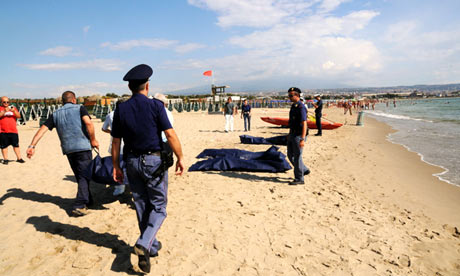
A forensic anthropologist is confident his research lab can identify hundreds of USS Oklahoma servicemen buried as unknowns in Hawaii. He just needs permission from the Department of Defense to do so.
John Byrd, director of the Central Identification Laboratory, became involved with the USS Oklahoma project in 2003 when Pearl Harbor survivor Ray Emory showed the lab critical information about the nearly 400 remains.
More than 600 U.S. servicemen killed during the Dec. 7, 1941, attack on Pearl Harbor are buried as unknowns in the National Memorial Cemetery of the Pacific. Roughly two-thirds of these belong to the USS Oklahoma. The commingled, unidentified remains may not be as unknown as they appear, Emory claimed.
Unknown graves
Emory, now 92, first visited the cemetery in Honolulu more than 20 years ago to honor those killed at Pearl Harbor. Dubbed the Punchbowl for resembling the serving dish, the National Memorial Cemetery of the Pacific is tucked away within a volcanic crater. The burial ground is home to 34,000 military veterans.
Emory expected to find an organized area dedicated to the hundreds of servicemen who lost their lives in the battle.
Instead he found nothing.
After failing to locate them himself, Emory, who was stationed on the USS Honolulu in 1941, asked the caretaker where he could find the Pearl Harbor graves. The answer horrified him. They were spread all over the area, the caretaker told him.
The graves were listed only as “unknown,” making it impossible for visitors to distinguish which grave held remains from which ship or from which war.
Emory scoured through Army and Navy records, finding whatever information he could about the burials.
The results were startling.
In 1950, 61 caskets carrying the remains of about 400 unknowns from the USS Oklahoma were buried in the Punchbowl.
He dug further and discovered a deceased personnel file listing the names of 27 servicemen from the ship whose remains were believed to be identified in 1949. An anthropologist didn't approve the identifications, however, and the remains were buried with the rest.
For more than a decade, Emory tried convincing officials to exhume these remains so they could be re-identified and returned to their families. He won a small victory after officials finally relented and added the ship names to the grave markers.
In 2003, he caught a bigger break.
Identification difficult
The Central Identification Laboratory is run by the Joint POW/MIA Accounting Command, a Department of Defense task force charged with accounting for all Americans listed as prisoners of war and missing in action. Byrd and other representatives sat down with Emory and found his information credible.
The scientists decided to unbury a casket believed to be holding the remains of five of the 27 servicemen. They found what they were looking for, but not what they expected.
“What we thought we were going to find were discrete sets of remains packaged in the normal nurturing manner,” Byrd said. “Instead, what we found was that all of the remains of the sailors were commingled.”
Along with the scrambled remains of the five sailors, the team found bones belonging to about 100 servicemen.
The Central Identification Laboratory eventually identified the five sailors, and the remains were delivered to their families. USS Oklahoma Fireman 3rd Class Alfred Livingston's body was pulled out of the ocean and was believed to have belonged to the USS Arizona. He was identified in 2007.
The identifications will end there, however, if the laboratory is not permitted to recover the rest of the buried remains.
After a series of failures in the late 1940s, researchers realized they could not identify individual sailors with the technology they had, he said. The order was given to separate the remains according to parts — such as legs, arms and heads — and then bury them in 61 caskets in the Punchbowl.
“That's a very unusual thing to do, and I don't know of any other cases where they've done that from that era,” Byrd said.
Technology has drastically improved since the '40s, but the segregated bones make it impossible for Byrd's team to identify the other remains from the casket without the rest.
He said the Central Identification laboratory has applied to recover the 60 remaining caskets from the Punchbowl, and he's still waiting for an answer.
Navy spokeswoman Lt. Cmdr. Sarah Flaherty told The Oklahoman the Department of Defense initiated a working group to examine the challenges and issues associated with recovering the remains. It is unknown how long it will take to reach a decision, she said.
While the working group convenes, the Department of Navy is seeking support to conduct a memorial and burial ceremony for the remains currently held by the laboratory. If approved, the ceremony would be Dec. 7, 2014, at the USS Oklahoma Memorial on Ford Island.
“The consideration for us for having the ceremony is that people who are survivors of the USS Oklahoma are not getting any younger,” Flaherty said. “The memorial ceremony ... offers temporary closure and a cogent place for survivors to treat as a final resting place in the interim.”
She said the ceremony would not hinder identification efforts if the working group approves the project to retrieve the buried caskets. The Central Identification Laboratory has already collected the needed DNA from the remains in its possession.
“There's nothing else that can be pulled,” Flaherty said. “That doesn't mean that identities have been recovered, but the information has been pulled from those remains.”
Closure for comrades
If the request to disentomb the 400 remains is approved, the outcome would be significant, Byrd said.
“We don't want to be overly optimistic, and we don't want to build unrealistic expectations, so we hedge a little bit when we think we can identify at least three quarters of them,” he said. “Maybe more.”
Byrd estimates these results would take about five years to be reached.
After two decades of arguing with officials, Emory has accepted he may not live to see closure for his comrades. But he doesn't keep fighting for himself. He does it for the families of the unidentified servicemen whom he believes have been neglected by the government.
“I'm 92, so I'll be dead before they get a lot of this done, but I just keep going along and doing my own thing,” he said. “And maybe someday something will happen, something will get done. But there's nothing I can do except maybe scream at some congressman or senator and say, ‘Hey. What do you intend for these people to do?'”
Monday 12 August 2013
http://m.newsok.com/forensic-anthropologist-says-he-can-identify-unknown-dead-on-uss-oklahoma/article/3868823









_0_0_0_0_0_0.jpg)